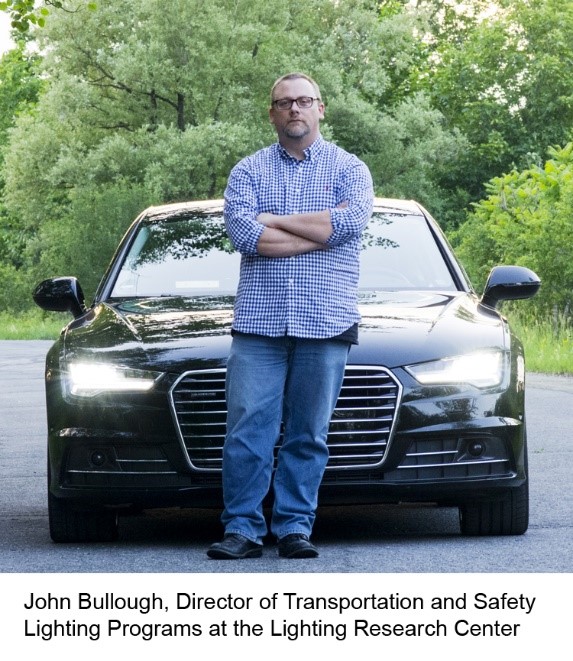LED technologies are rapidly growing in terms of market share for roadway lighting systems in the U.S., with about 15% of roadway lights using LED sources. Unlike the yellowish glow of high pressure sodium lamps found in most of the other U.S. streetlights, LED illumination usually is white in color. This difference has sparked concerns about health and wellbeing from the American Medical Association (AMA).
Early LED streetlights were "cool" in color appearance, producing correlated color temperatures (CCTs) of 5000 K or higher. More recently the industry standard for CCT of LED streetlights has been around 4000 K, similar to that of many mercury vapor and metal halide lamps used in some roadway lighting. Citing potential impacts including glare, optical radiation hazards and circadian disruption, as well as effects on wildlife near lighted roads, the AMA recently recommend the use of "warmer" appearing LED lights having a CCT of 3000 K or lower. Newer LED streetlights with these lower CCTs are beginning to be available in the marketplace. More than ever, it's important to understand the consequences of using LEDs varying in CCT.
 |
|
(Photo courtesy of LRC) |
To further this understanding, a panel session entitled "Addressing Concerns about LED Street Lighting" will occur at the Annual Meeting of the Transportation Research Board (TRB) of the National Academies, to share the latest evidence about the potential implications of LED roadway lighting on humans and other species. The session is sponsored by the TRB's Committee on Visibility and co-sponsored by the Committee on Ecology and Transportation.
The panel was organized and will be moderated by John Bullough, Director of Transportation and Safety Lighting Programs at the Lighting Research Center at Rensselaer Polytechnic Institute. Bullough also serves as Chair of the Visibility Committee. According to Bullough, "Road lighting specifiers have primarily been concerned about the safety benefits of roadway lighting, and LED technology has the potential to enhance those very real benefits. And there is growing awareness of the collateral effects of lighting, particularly with LEDs. An objective of this panel session is to enhance that awareness with data from disciplines not traditionally associated with the engineering of roadway lighting systems."
The session will take place in the Walter E. Washington Convention Center in Washington, DC on January 11, 2017, and will include presentations by Maya Babu from the Mayo Clinic, Windy Boyd from the National Institute of Environmental Health Sciences, Fraser Shilling from the University of California-Davis, Kimberly Andrews from the University of Georgia, and Mark Rea from the Lighting Research Center. More information about this event can be found online at: http://annualmeeting.mytrb.org/interactiveprogram/Details/6211.












